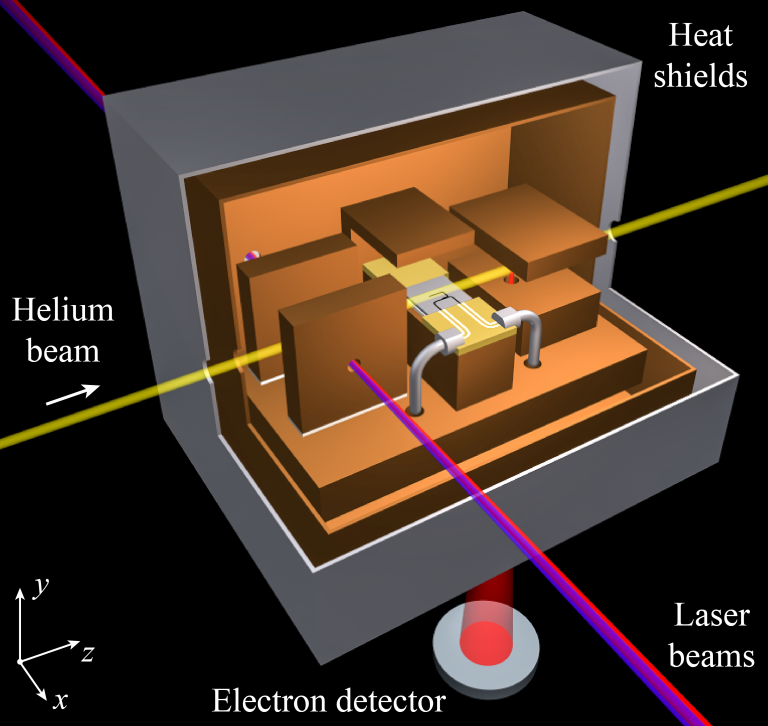Hybrid quantum interface opens possibility for quantum memory and photon conversion
27 May 2020
Interface between neutral-atom qubits and superconducting microwave circuits offers opportunities for quantum communication and quantum information processing.

UCLQ researchers, Dr Alex Morgan, a former PhD student in the EPSRC Centre for Doctoral Training in Delivering Quantum Technologies, and Prof Stephen Hogan in the Department of Physics and Astronomy have demonstrated in their recent paper published in Physical Review Letters, a new hybrid quantum interface between neutral-atom qubits and superconducting microwave circuits.
Qubits can be formed from a range of different physical systems. In essence, any two-level quantum-mechanical system can be used as a qubit. However, the amount of time that different types of qubits stay in a superposition state varies. This is referred to as their "coherence time." The longer the coherence time, the more suited the qubit can be for complex computations.
Along with different coherence times, each type of qubit system has its own set of unique characteristics. For example, each system will have its own available transition frequencies, and timescale for state manipulation.
Best of both
Hybrid quantum systems aim exploit the distinct advantages provided by different types of qubits. UCLQ Researchers Dr Morgan and Prof Hogan have demonstrated a new hybrid quantum interface that utilises the long coherence times of neutral atom qubits, and the scalability and fast quantum state manipulation achievable in solid-state superconducting circuits.
To realise this interface, helium atoms were prepared in highly-excited quantum states known as Rydberg states. These states are extremely sensitive to photons in the microwave region of the electromagnetic spectrum. This sensitivity was exploited, together with the enhancement in field strength that occurs when microwave photons are confined in cavities integrated into superconducting circuits, to interface the atoms with the circuits.
This hybrid quantum interface offers exciting opportunities for the interconversion of optical and microwave photons which is of importance for quantum communication. In addition, the neutral-atom qubits with their long coherence times in this interface may lead to the development of new microwave quantum memories for quantum information processing.
LINKS:
- Full paper on the website of the journal Physical Review Letters
- Academic Profile of Prof Stephen Hogan
- UCL Atomic, Molecular, Optical and Positron Physics Website
CONTACT:
Henry Bennie, UCLQ Communications and Business Development Manager
IMAGE:
Hybrid Rydberg-atom and superconducting-microwave-circuit interface Apparatus. Credit: Stephen Hogan, UCL.
 Close
Close

